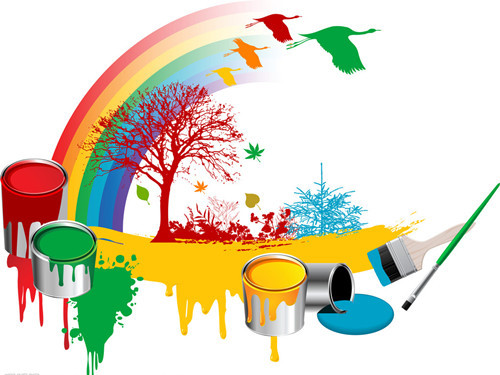
In recent years, with the rapid development of the real estate industry and manufacturing industry in China, great development space has been created for the development of the paint industry. In a short period of 30 years, China's paint industry has become a global paint producing country and a big consumer nation from nothing, and its development speed has come to an end. However, with the slowdown in the domestic macroeconomic growth, the growth rate of investment in the domestic real estate industry has declined since 2014, which has greatly reduced the demand for paint products, leading to overcapacity of domestic paints and a decrease in the profitability of paint companies. For coating companies, overcapacity has seriously affected the development of enterprises and industries. Coating companies have almost reached the point of talking about "excess" discoloration. In fact, paint companies do not have to talk about "excess" and change their colors, many people of the domestic paint industry The understanding of overcapacity still has some misunderstandings. Here we take a look at the overcapacity problem in the paint industry.
What is overcapacity?
"Excess" refers to the "surplus" of goods produced by the production units that exceed the market demand. In fact, this concept is very vague and does not give a definition that is more scientific and can withstand the scrutiny of the market. For example, how much excess market demand is considered “surplus†and how long does it take for inventory to be considered “surplusâ€? Many commodities have suddenly become market darling after being put on hold for 3-5 years, becoming buyers’ sought-after goods. Considering the “surplusâ€, due to the sudden change in the international trade situation, the products that were originally sold well were not sold by international politics and policies. They are also classified as “surplus†series. Therefore, there are special backgrounds for “excess†countries. And the reason can't be generalized.
How to understand the overcapacity in the paint industry
For the coatings industry, overcapacity does not mean that all of the coating production capacity is overcapacity. From the perspective of the current development of the coating industry, overcapacity is caused by low-end and middle-end coating products, such as powder coatings and water-based environmental protection coatings. Not to be left. Moreover, as the output of the waterborne metal industrial paint market is relatively small, and its production enterprises in the country are also very few, so this cannot be considered as a surplus of production capacity. Therefore, when we discuss the overcapacity of the paint industry, we must consider it from multiple aspects. .
The development of the paint industry for economic development is more than an indispensable role in economic development. The key lies in how we control this “degreeâ€. We can neither let the paint industry's "surplus" grow in disorderly development and expansion, nor can we allow it to occupy too much resources and productivity, and putting "surplus" into the cage for supervision is an effective method. The rational, orderly and timely use of the potential of "surplus" should be the focus of national policy.
In the current coating industry, the “cage†that plagued the development of the coating industry is environmental protection. In the past two years, the state has issued a series of environmental protection policies concerning the coating industry, such as paint consumption tax, which makes solvent-based coating companies uncomfortable. Looking at the current development of the domestic paint industry, we will find that the domestic paint industry is dominated by small and medium-sized paint companies. The investment of these paint companies in technology research and development and new product research and development is relatively small, and their paint products are medium and low. The main end. Therefore, the paint industry resolves low-end overcapacity, first of all to cultivate a large number of medium-sized paint companies, and to increase support for these paint companies in technology research and development and new product research and development, help these medium-sized paint companies to improve their technological R&D capabilities, and gradually enter the high-end The research and development of paint products will eventually complete the transition from low-end to high-end products.
Although domestic low-end and middle-end paint products are in a situation of overcapacity, we can fully utilize the “One Belt and One Road†opportunity to realize output of production capacity and export this surplus part of paint products to foreign countries. On the one hand, this can ease the domestic paint market. The situation of excess production capacity, on the other hand, can also increase the profitability of paint companies and accelerate the internationalization of the domestic paint industry.
Judging from the long-term development of the paint industry, we do not have to talk about "excess" and change color. Overcapacity is not terrible. As long as we make good use of it, this part of the remaining production capacity can still improve the performance of paint companies and improve the paint industry. output value.
A butterfly valve, is a valve that isolates or regulates the fluid flow. It's simple but reliable in Control Valves families, Butterfly Valve,Tripple Offset Butterfly Valve,Thread Butterfly Valve, Electric Actuated Butterfly Valve, Pneumatic Butterfly Valves.
Butterfly Valve,Tripple Offset Butterfly Valve,Thread Butterfly Valve, Electric Actuated Butterfly Valve, Pneumatic Butterfly Valves.
Zhejiang Philic Fluid Control Co.,LTD , https://www.philicflow.com